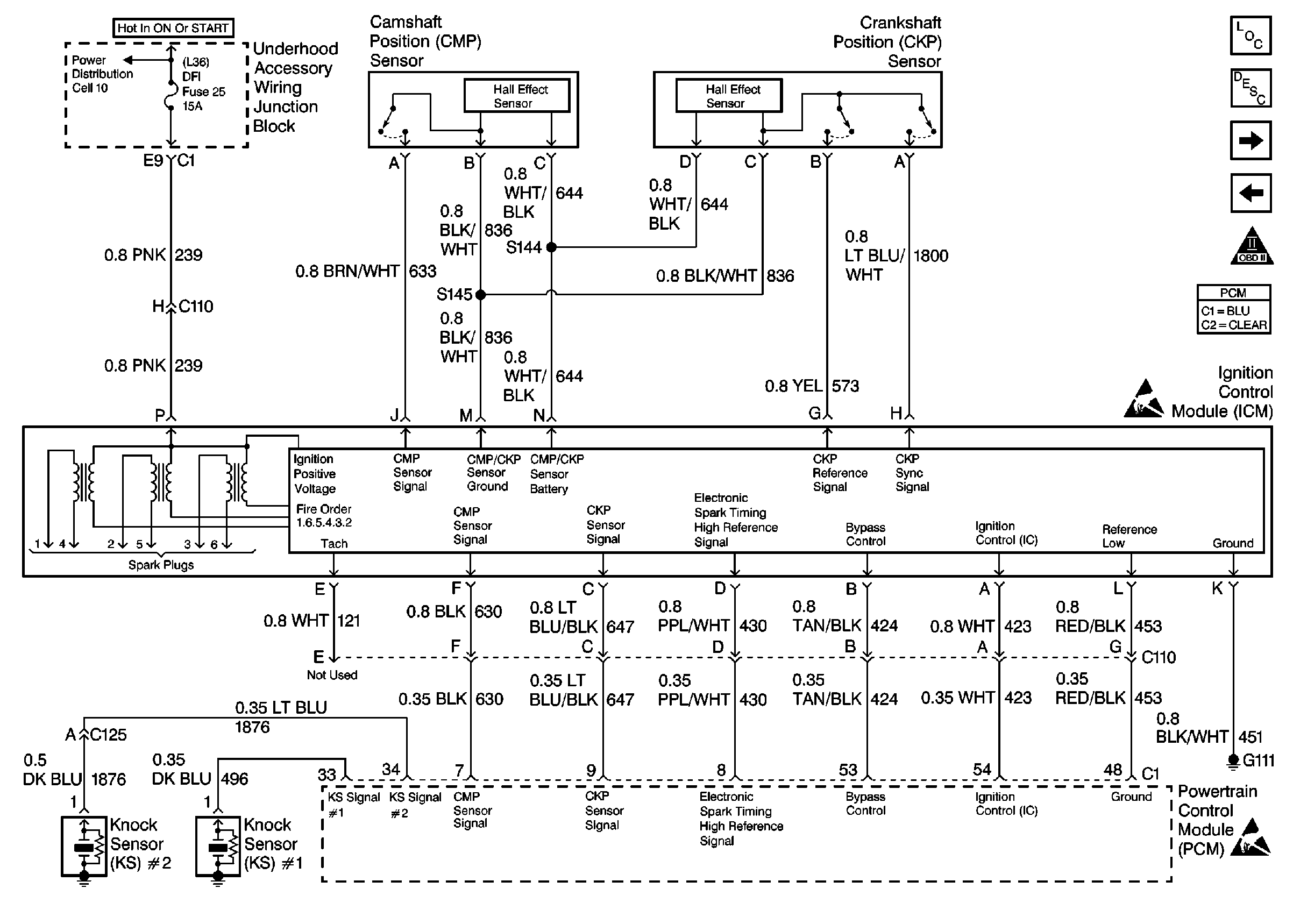Refer to
Ignition Control Module, CMP and CKP

Circuit Description
The powertrain control module (PCM) continuously sends ignition control (IC) spark timing pulses to the ignition control module (ICM) on the IC circuit. However, during start-up, ICM grounds the IC spark timing pulses and maintains spark timing fixed at 10° BTDC. The fixed spark timing is maintained until the engine speed is above a specific RPM and the PCM receives a calibrated number of 3X reference pulses from the ICM (Bypass Mode). Once the PCM receives the 3X reference pulses, the PCM applies 5 volts to the ICM on the bypass circuit. The bypass voltage signals the ICM to transfer IC spark timing to the PCM (IC Mode). The ICM switches the IC pulses from ground allowing the PCM to control spark timing. If the PCM detects an open in the bypass circuit, DTC P1352 is set. The engine starts and may run in Bypass mode timing (spark timing fixed at 10°BTDC).
Conditions for Running the DTC
The engine is running.
Conditions for Setting the DTC
The PCM detects an open circuit in the Bypass circuit.
Action Taken When the DTC Sets
| • | The PCM illuminates the malfunction indicator lamp (MIL) during the second consecutive trip in which the diagnostic test has run and failed. |
| • | The PCM stores the conditions which were present when the DTC set as Freeze Frame and Fail Records data. |
Conditions for Clearing the MIL/DTC
| • | The PCM turns the MIL off during the third consecutive trip in which the diagnostic has run and passed. |
| • | The history DTC clears after 40 consecutive warm-up cycles have occurred without a malfunction. |
| • | The DTC may be cleared by using the scan tool Clear Info function or by disconnecting the PCM battery feed. |
Diagnostic Aids
Check for the following conditions:
| • | A faulty connection at the PCM. Inspect the harness connectors for backed out terminals, improper mating, broken locks, improperly formed or damaged terminals, and faulty terminal to wire connections. |
| • | Inspect the wiring harness for damage. If the harness appears to be OK, disconnect the ICM, turn the ignition on, and observe a digital multimeter connected between the IC circuit and B+ while moving the connectors and wiring harnesses related to the ICM. A change in voltage indicates the location of the malfunction. |
Reviewing the Fail Records vehicle mileage since the diagnostic test last failed may help determine how often the condition that caused the DTC to be set occurs. This may assist in diagnosing the condition.
Step | Action | Value(s) | Yes | No |
|---|---|---|---|---|
1 | Did you perform the Powertrain On-Board Diagnostic (OBD) System Check? | -- | ||
2 |
Is the resistance more than the specified value? | 5K ohms | ||
3 |
Was a problem found? | -- | ||
4 |
Was a problem found? | -- | ||
5 |
Was a problem found? | -- | ||
6 | Replace the ICM. Refer to Ignition Control Module Replacement . Did you complete the repair? | -- | -- | |
7 |
Important: Replacement PCM must be reprogrammed. Refer to Powertrain Control Module Replacement/Programming . Replace the PCM. Did you complete the repair? | -- | -- | |
8 |
Does the scan tool indicate DTC 1352 Failed This Ign? | -- | System OK |
